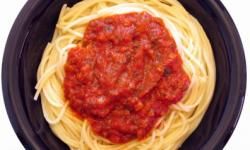Steak, barbeque and spaghetti owe a lot of their delicious flavor to their respective sauces. Follow these stain removal tips to eliminate these tasty toppings from your inedible household surfaces.
The first step in removing food stains is to identify the stained material.
Advertisement
Below are the most common types of materials that can become food-stained, with steps on how to remove food from each:
- Non-washable fibers such as Acetate, Burlap, Carpet (synthetic or wool), Fiberglass, Rayon, Rope, Silk, Triacetate or Wool
- Washable fibers such as Acrylic Fabric, Cotton, Linen, Modacrylic, Nylon, Olefin, Polyester or Spandex
- Hard surfaces such as Acrylic Plastic, Aluminum, Asphalt, Bamboo, Brass, Bronze, Cane, Ceramic Glass/Tile, Chromium, Copper, Cork, Enamel, Glass, Gold, lron, Ivory, Jade, Linoleum, Opal, Paint (flat or gloss), Pearls, Pewter, Platinum, Plexiglass, Polyurethane, Porcelain Dishes, Stainless Steel, Vinyl Clothing, Vinyl Tile or Vinyl Wallcovering
- Stone surfaces such as Alabaster, Bluestone, Concrete, Flagstone, Granite, Limestone, Marble, Masonry Tile, Sandstone, Slate or Terrazzo
- Leather or suede
- Silver
- Wallpaper
- Wood
Advertisement
